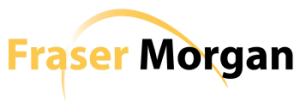House prices in the latest three months (June-August 2014) were 3.0% higher than in the previous three months (March-May 2014); down from 3.5% last month according to the latest Halifax House Price Index August 2014.
Prices in the three months to August were 9.7% higher than in the same three months a year earlier. This was lower than the annual rate of 10.2% in July.
House prices rose by 0.1% between July and August, continuing the fluctuating monthly movements recorded this year. There were five monthly price rises and three price falls in the first eight months of 2014. The quarter on quarter change is a more reliable indicator of the underlying trend.
Home sales have remained broadly stable so far this year – at between 101,000 and 104,000 a month – with the exception of February (109,500). Despite a modest (1.3%) decline in July (to 101,190), sales in the three months to July were 16% higher than in the same quarter last year. (Source: HMRC, seasonally-adjusted figures)
There are tentative signs that a better balance between demand and supply may be emerging which, if sustained, would help to dampen the pace of house price growth. The number of new buyer enquiries fell marginally in July; the first decline since January 2013. New sales instructions (i.e. the number of second-hand properties coming onto the market) also increased for the second successive month. (Source: RICS)
The number of new homes completed in England increased by 6% between the first and second quarters of 2014 and the total during April-June 2014 was 7% higher than in the same period last year.A continuation of this upward trend in housebuilding could also help to bring demand and supply into better balance. There are, however, signs that material and labour shortages will constrain housebuilding activity, at least, in the short-term. (Sources: CLG, HBF)
The Financial Policy Committee announced in late June that lenders are to (i) limit mortgages with a loan-to-income ratio of 4.5 or over to 15% of their lending, and (ii) must test whether borrowers are able to afford their mortgage if the prevailing mortgage rates were to increase by three percentage points over the first five years of the loan. These measures are designed to prevent a future build-up of mortgage debt threatening financial stability and should help to constrain house price growth over the medium and longer-terms.
Commenting, Martin Ellis, Housing Economist, said:
“House prices in the three months to August were 3.0% higher than in the three months to May. Annually, prices were 9.7% higher in the three months to August than in the same three months last year. Both the quarterly and annual increases were lower than in July.
“Housing demand is supported by continuing economic recovery, growth in employment, improving consumer confidence and low mortgage rates. Nonetheless, earnings growth that remains below consumer price inflation, and the prospect of an interest rate rise at some point over the coming months, are likely to curb demand.
“There are some signs of an improvement in housing supply, both in terms of more second-hand properties coming onto the market and increased numbers of new homes. These trends, if sustained, should help to improve the balance between supply and demand, contributing to an easing in the pace of house price growth.”

